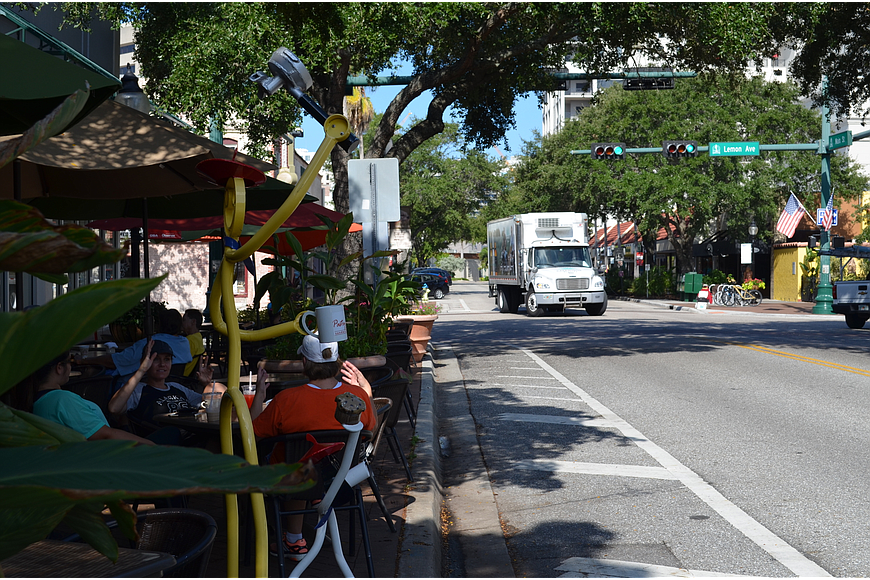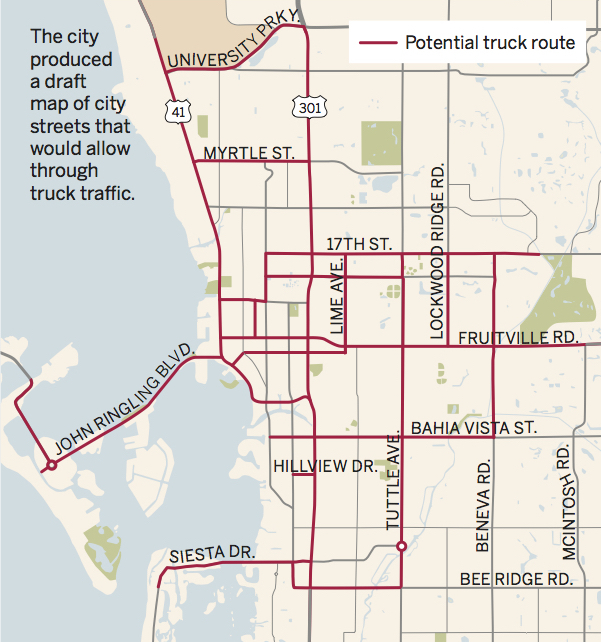- April 28, 2024
-
-
Loading

Loading

Sarasota residents don’t want large commercial vehicles to keep on trucking through their neighborhoods.
That’s been made clear to city officials, who are working on revising Sarasota’s truck ordinance. Staff will present potential changes at Monday’s City Commission meeting, proposing new regulations that would reverse the way the city manages truck travel.
Right now, the city restricts large trucks from traveling on residential streets. That creates a few issues, staff says. First, the city’s definition of a “truck” is vague. The ordinance defines a truck as a vehicle designed for transporting loads in excess of 1 ton. Using weight capacity as a metric makes it hard to enforce the ordinance, said Jason Collins, president of St. Petersburg-based transportation firm ADEAS-Q.
The ordinance also puts the onus on staff and residents to determine which neighborhood streets should be restricted from through truck traffic. That’s why the city is proposing a new system that outlines streets as designated truck routes — barring through truck traffic on all other roads.
A draft of truck routes, crafted by staff and ADEAS-Q, would largely restrict through truck traffic to major roads. That includes streets such as Fruitville Road, U.S. 301, Bahia Vista Street and 17th Street.

Trucks would still be allowed to travel down any street necessary to get to their eventual destination. The goal is to better manage their travel leading up to that destination, Collins said.
“It really creates a citywide approach for addressing this topic,” Collins said.
At the Nov. 4 Coalition of City Neighborhood Associations meeting, a representative from South Poinsettia Park said the neighborhood was closely watching the city’s effort to designate new truck routes. Residents in the neighborhood, which borders the Southside Village commercial district, are some of the people who have asked staff to better manage the way trucks traverse the city.
City Engineer Alex DavisShaw said officials had to strike a balance between limiting travel through residential areas and still effectively guiding trucks to where they need to go. That means the city can’t be too restrictive in designating truck routes, because the policy could end up having the opposite of its intended effect.
“If we don’t give them a route, once they get near their destination, they can go on any road,” DavisShaw said.
Collins outlined some other recommended changes to the existing ordinance. He suggested trucks should be more generally defined as vehicles with six or more tires, though the restrictions would be limited to just commercial vehicles. Any violation of the ordinance could be made a municipal violation, rather than a traffic control violation, which is easier to contest.
And he encouraged the city to make it clearer where trucks are and aren’t allowed to travel. That means reaching out to trucking companies and GPS manufacturers so that they’re clear where they’re supposed to be traveling.
“We should have awareness beyond just signage,” Collins said.